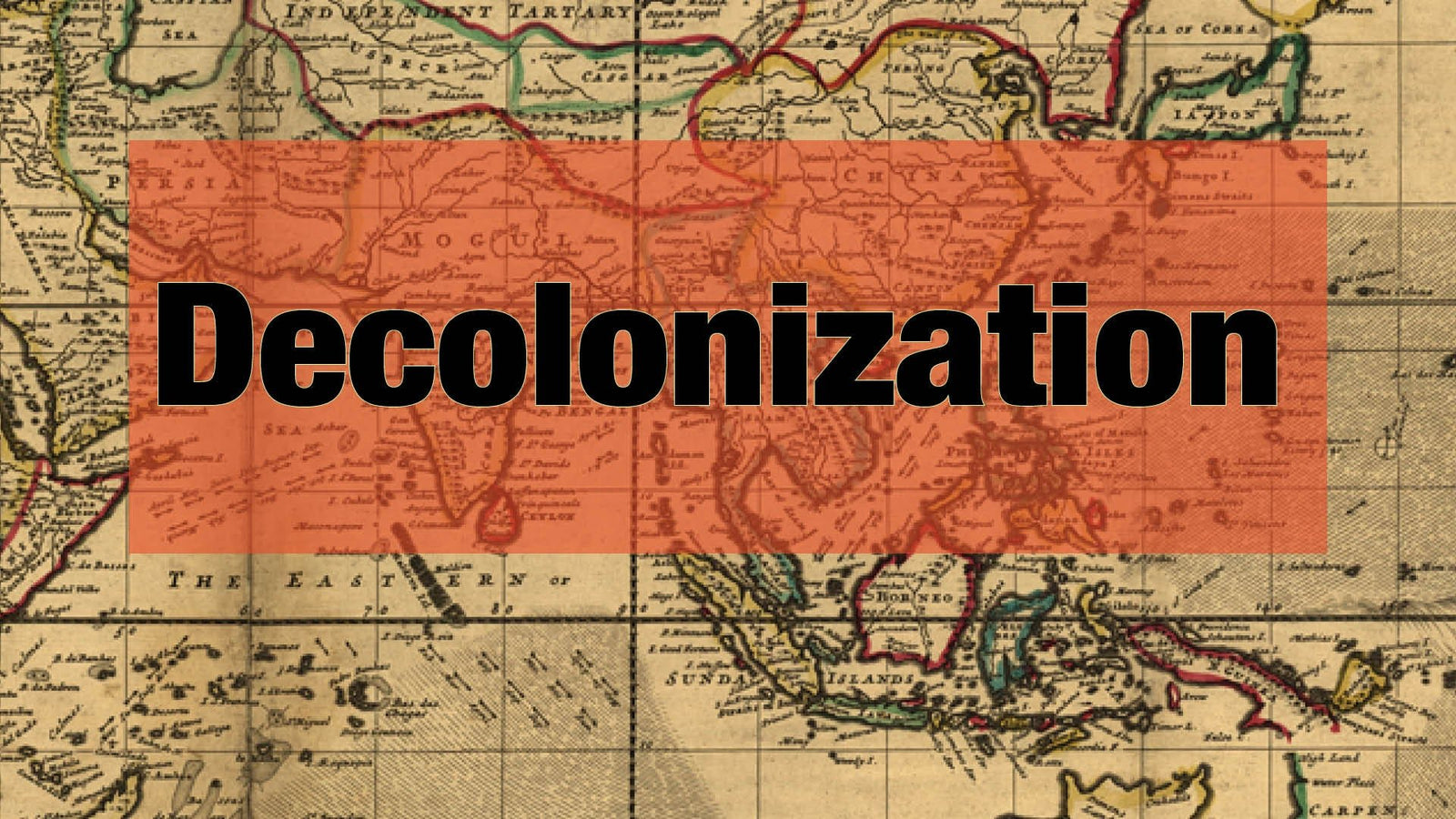Decolonization, which unravels lingering colonial systems and structures, has been topical in Africa and the Americas for over 20 years. Those who embrace post-colonial theory want to destabilize ongoing political, economic, aesthetic, social and cultural forces that rationalize and preserve historical inequalities. Original cultural context is foundational to remedies.
Mahatma Gandhi tried. The Swadeshi and Swaraj movements made de-Europeanized fashion...and khadi—the Livery of Freedom—into primary political projects. In a self-decolonizing gesture, the 5-year-old, Indira Gandhi burned her imported doll. Everyday life sees dignity and rebellion travel alongside the swish-swish walk of women in their best saris. Did Indian independence in 1947 and the post-WWII transition to a rules-based order wipe the slate clean? Or, is it time for another reckoning? It's complicated.
"The original context of crafts is alive and knowable in the obsessive record-keeping of India's royal families, largely unexamined. India has an exciting opportunity here because it is the only former colony where years of craft documentation–free of hybridization–still exists."
Mysteries. Externalities. The Colonialism Hangover.
India's independence movements were similar, formally, to post-colonial theories like decolonization. All had goals like economic freedom, cultural claiming, self-determination, ecological stewardship and ethical regard for the vulnerable. In the world's other former colonies, young people use decolonization frameworks for ethical change and are radically "woke" about decolonizing everything everywhere. Yet, in today's India, decolonization does not seem to have crossed-over from academic settings to broader audiences. Why is that?
For India in general and crafts in particular, problematic systems and structures remain, but causes are elusive. Why isn't skilled craft labor enough for families to afford education and health care? When did the social status of artisans fall from venerated makers to low-status jobs their children may not want? When did environmentally extractive industries, undervalued resources, unsafe conditions, visual homogenization, commodity pricing, creative erasure and cultural appropriation become normalized? Colonization offers clues.
An externality is the economic term for costs that don't show up in prices. Why do handmades have so many externalities? Capitalism's maximization of shareholder value and the associated race to lowest costs is one vector to blame. However, capitalism alone doesn't explain 300 years of emotional disquiet and economic precarity. We see decolonization as both framework and path for progress.
The Economic History of Indian Crafts
The east absorbed India's genius; the west wanted to own it. This is overly simplistic, but has the virtue of being true. If we focus the decolonization lens on crafts, a clear story emerges. In the 15th and 16th centuries, India was a huge, mostly stable empire with 1500 years of largely peaceful making and trade expertise—at a time when Europe faced wars of religion, territory, crusade and collapse. Structurally, Mughal India had a blended top-down, command economy with significant market economy attributes. India's rulers had to care about the welfare of their people or fear rebellion. The British in India had no such deterrents. Britain's rising taste for mercantilism, capitalism and conquest had fundamentally different goals and methods.
South Asia was good at soft power culture, making, trade and exports. Europe excelled at capitalism, consumption, exploration, religious conversion, legal frameworks and the hard power of war. If we define colonialism as enduring political, social, economic and cultural domination—hard power would seem to win every time.
India: Goddess of Luxury
The Indus Valley is one of the great cradles of civilization. The region has been growing cotton, trading textiles and making every category of luxury for around 5,000 years. Bharat (Greater India's) innovations were the economic engine behind India's trade dominance. Objectively, India invented and controlled the world's most economically valuable technologies and making skills—which created the world's most desirable products—for at least 1500 years. China was the only real challenger.
Pliny the Elder whinged that the Roman empire's luxury-loving families sent too much gold to India. Egyptian mummies were wrapped in fine Indian muslins. As Bharat goods spread over the globe on Venetian, Portuguese, Dutch, Spanish and British ships—India continuously refined its products, without peer. As Indian products flowed west, bullion flowed east—making the country both a magnet and a target.
If we're honest, Indian crafts are foundational to authentic considerations of aesthetics, beauty, quality and the history of luxury. India invented cut and polished gemstones; sophisticated woven, dyed, printed and embellished textiles; morphine and medicines, spices and scents. All these traveled over the Silk Roads to Egypt, Greece, Rome and beyond.
The Inversion of Trade Flows
From about 1 CE until colonization in the 17th century, Bharat was the world's largest economy, creating between 25% and 35% of global GDP. At independence in 1947, that share of GDP had dropped to about 2% of world trade. The opposite was true for India's colonizer. In the 1700s Great Britain's global share of GDP was about 2.9%. In 1870, the largest component of Britain's spectacular rise to 24.28% of global GDP was British India's 12.15% of GDP. The colonization-driven inversion and fall were traumatic for millions of Indians.
The East India Trading Company, a British government proxy, imposed taxes on conquered India. The British utilized these domestic taxes to buy Indian goods for export. Using new, domestic taxes in place of British gold left capital in Britain—available for their priorities of investment, modernization, infrastructure, capital equipment and war. Put simply, after conquest, trade volumes remained relatively consistent but benefits now accrued to The Company.
The British imposed their mercantilist/capitalistic economic system onto the Bharat framework with hugely disruptive results. There are stories of these changes being especially harsh on karigars in the Indian palace karkhana culture. Karigars, who were previously rewarded with high respect and economic security for making fine things now faced humiliation and fall. Karigar products went from competing on quality to competing on price in a new economic system that maximized profits for unknown people thousands of miles away.
India's apathy towards reappraising colonization's effects got us thinking about what all this might mean to the business of crafts, culture and heritage. India became poorer as colonizers became richer—an inversion that built enduring, western advantages. India's fall funded investments in power looms, military technology and other advantages that fueled British manufacturing supremacy. Colonization sealed imposed disadvantages that are still omnipresent. Our view is that these changes broke crafts. See our structural analysis of the crafts sector and differentiation strategy, here.
The Colonial Gaze
Imperialism and identity are linked. Maintaining the colonizer's cultural centrality is a form of self-harm. Eurocentric selection criteria, beauty preferences and the way dominant cultures produce knowledge are all things that perpetuate unfair structural and systemic dynamics. Why is Indian jewelry priced lower than French designs? Why is an Italian handwoven shirt worth more than an Indian one? The questions matter even if there are no easy answers.
India has a layered history of conquest, meaning Britain was the last imperial power, but not the first. Invasion was frequent and history is long. Conquerors included Aryans, Greeks, Mauryans, Persians, Arabs, Mongols and more. It is worthwhile to ask, when did Indian-ness emerge?
Cultural appropriation happens when the dominant culture, (or in today's world, a company with high buyer-power)—uses patterns, symbols, styles and culture-specific design codes from vulnerable people—outside of the original context. Being “inspired” by other cultures might seem like a positive thing. The appropriator, without bad intentions, may see sampling as a respectful tribute. Here's the problem. The vulnerable source-culture sees appropriation as problematic, at best. Picking and choosing elements that appeal to the dominant culture's interests distorts, erases and elides cultural details and complexity—especially when the dominant culture "appreciates" things it took by force. Valuing aesthetic qualities, divorced from original purpose, triggers the original trauma. Appropriation hybridizes and hollows-out culture even if there are no bad actors or intentional bad faith. Jodha's marriage to Akbar; Sabyasachi's H & M controversy and other frequent aggressions make cultural emotions visible.
Appropriation is also economic. The source culture is almost never acknowledged. Nor paid. Longer-term, when appropriation goes unchallenged, legal theory says the source culture may forfeit opportunities to claim patents, trademarks, copyrights and NFTs in the future.
The Royal Secrets
What if conversations about the decolonization of crafts were centered in their true, original context? What would Indian crafts look like if the glory of artisanal making had not been erased by 200 years of British rule, (or 500 years if you begin when the Portuguese arrive in 1505)? A pillar of post-colonial theory is that original context is necessary for any respectful dialogue or reckoning around colonization.
The first Jaipur Crafts Festival surfaced an overlooked fact that may be important to considerations of global luxury, cultural history, product exports and curing the colonization hangover. The original context of crafts is alive and knowable in the obsessive record-keeping of India's royal families, largely unexamined. India has an exciting opportunity here because it is the only former colony where years of craft documentation–free of hybridization–still exists. Maybe the secrets will tell us whether original chintz took 133 or 181 process steps and other facts about how to make Bharat's superlative products in the original way?
We'll leave theoretical and sociological fine points to others but, here's what we can say for sure. Restoring knowledge that transmutes emotion and distress into freedom for both colonizer and colonized, would be effort well spent.
A Note from the Authors
Craft's legacies of extraction, exploitation and unpaid externalities are still visible. We believe it is possible or even likely that the hangover from colonization is a major contributor to why handmades are priced as commodities and the larger crafts sector does not meet the definition of a functioning market.
The Jaipur Crafts Festival Heritage week is a forum about decolonizing the highest level of Bharat crafts while asserting India’s design influence on European style. We believe this is vital to building a better future for the whole craft value chain. Please join us.
Scott Frankum and Nilesh Yadav
Thought Experiments on the Decolonization of Crafts
- What would India's national development look like without a history of unequal exchange, imposed borders and damaged natural resources?
- What would the national personality be without subjugation trauma and forced impoverishment?
- How would you feel personally without external beauty standards and cultural dynamics that redefines and erases Indian genius to the point it can be claimed by others?
- What if power never centered on Britain and whiteness?
- What if those privileges had never existed?
- What if India had maintained sovereignty over Indian-ness?
- What would the Indian future look like absent colonial history?
- What if India's recent history were not reduced to everything as exploitable resource?
- What if these activities were not ongoing?






